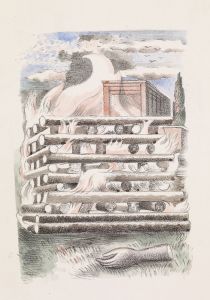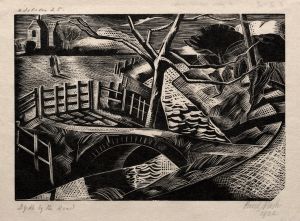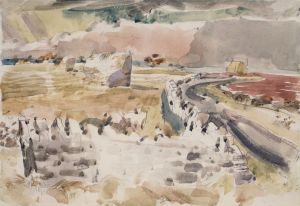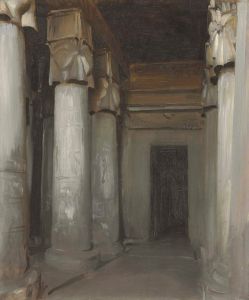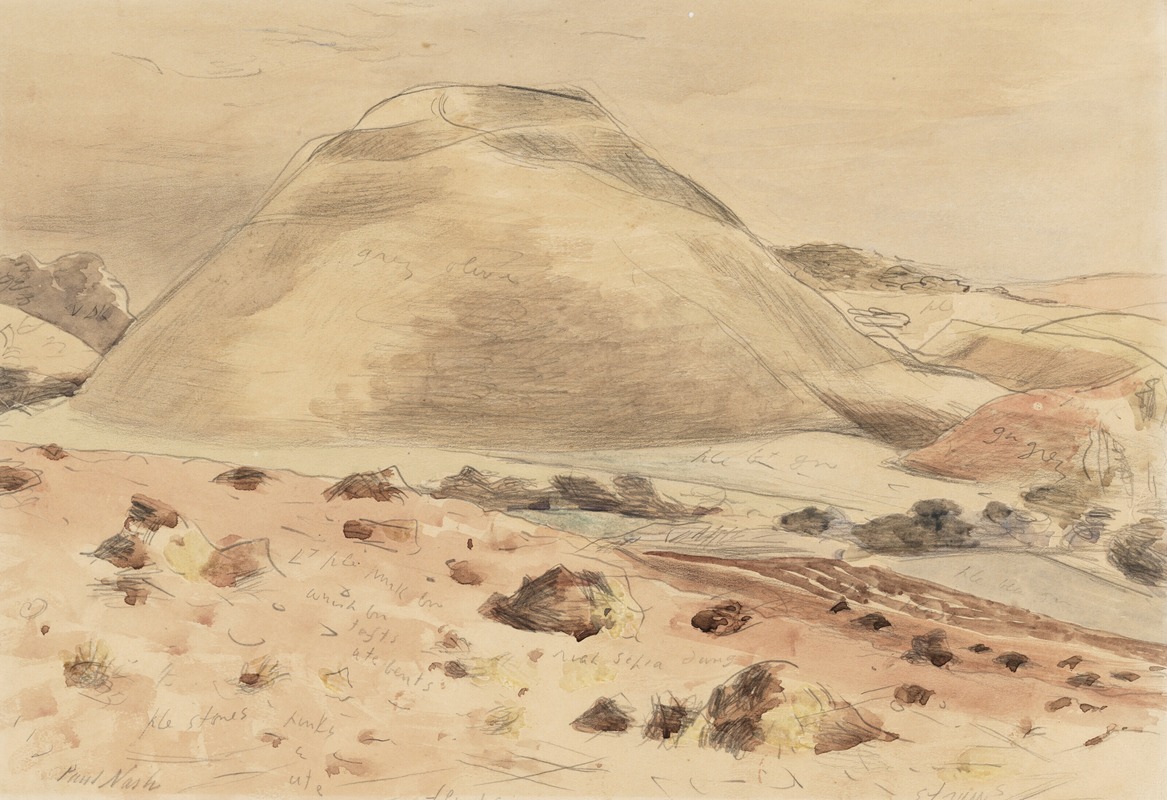
Silbury Hill
A hand-painted replica of Paul Nash’s masterpiece Silbury Hill, meticulously crafted by professional artists to capture the true essence of the original. Each piece is created with museum-quality canvas and rare mineral pigments, carefully painted by experienced artists with delicate brushstrokes and rich, layered colors to perfectly recreate the texture of the original artwork. Unlike machine-printed reproductions, this hand-painted version brings the painting to life, infused with the artist’s emotions and skill in every stroke. Whether for personal collection or home decoration, it instantly elevates the artistic atmosphere of any space.
Paul Nash was a prominent British artist known for his landscape paintings, which often incorporated elements of surrealism and modernism. One of his notable works is "Silbury Hill," a painting that reflects his fascination with ancient landscapes and historical sites in England.
Silbury Hill is a prehistoric artificial chalk mound located near Avebury in Wiltshire, England. It is part of the Stonehenge, Avebury, and Associated Sites UNESCO World Heritage Site. The hill is the largest man-made mound in Europe and is believed to have been constructed around 2400 BC. Its purpose remains a mystery, but it is often associated with ancient rituals or as a burial site.
Paul Nash's painting "Silbury Hill" captures the enigmatic presence of this ancient monument. Nash was deeply influenced by the English landscape and its historical and mystical qualities. His work often explored the relationship between the natural world and human history, and "Silbury Hill" is a quintessential example of this theme.
In the painting, Nash presents Silbury Hill as a central, almost mystical feature of the landscape. The hill is depicted with a sense of reverence and mystery, emphasizing its significance and the aura of ancient history that surrounds it. Nash's use of color and form in the painting reflects his modernist approach, with a focus on geometric shapes and a limited color palette that enhances the monument's prominence within the composition.
Nash's interest in Silbury Hill and similar sites was part of a broader fascination with the ancient and the mystical in the British landscape. He was a key figure in the development of modernist art in Britain and was associated with movements such as surrealism and abstraction. His work often sought to capture the spirit of place, imbuing landscapes with a sense of history and otherworldliness.
"Silbury Hill" is not just a representation of a physical location but also an exploration of the themes of time, history, and the intersection of nature and human activity. Nash's ability to convey these themes through his distinctive style has made his work enduringly influential in the canon of British art.
The painting is part of Nash's broader body of work that includes other notable landscapes and war art. Throughout his career, Nash was deeply affected by his experiences during World War I, which influenced his perspective on the landscape as a witness to history and change. This perspective is evident in "Silbury Hill," where the ancient mound stands as a testament to the passage of time and the enduring presence of the past within the modern world.
Paul Nash's "Silbury Hill" remains an important work for its artistic merit and its exploration of the themes that defined Nash's career. It continues to be studied and appreciated for its contribution to British modernism and its evocative portrayal of one of England's most mysterious ancient sites.





